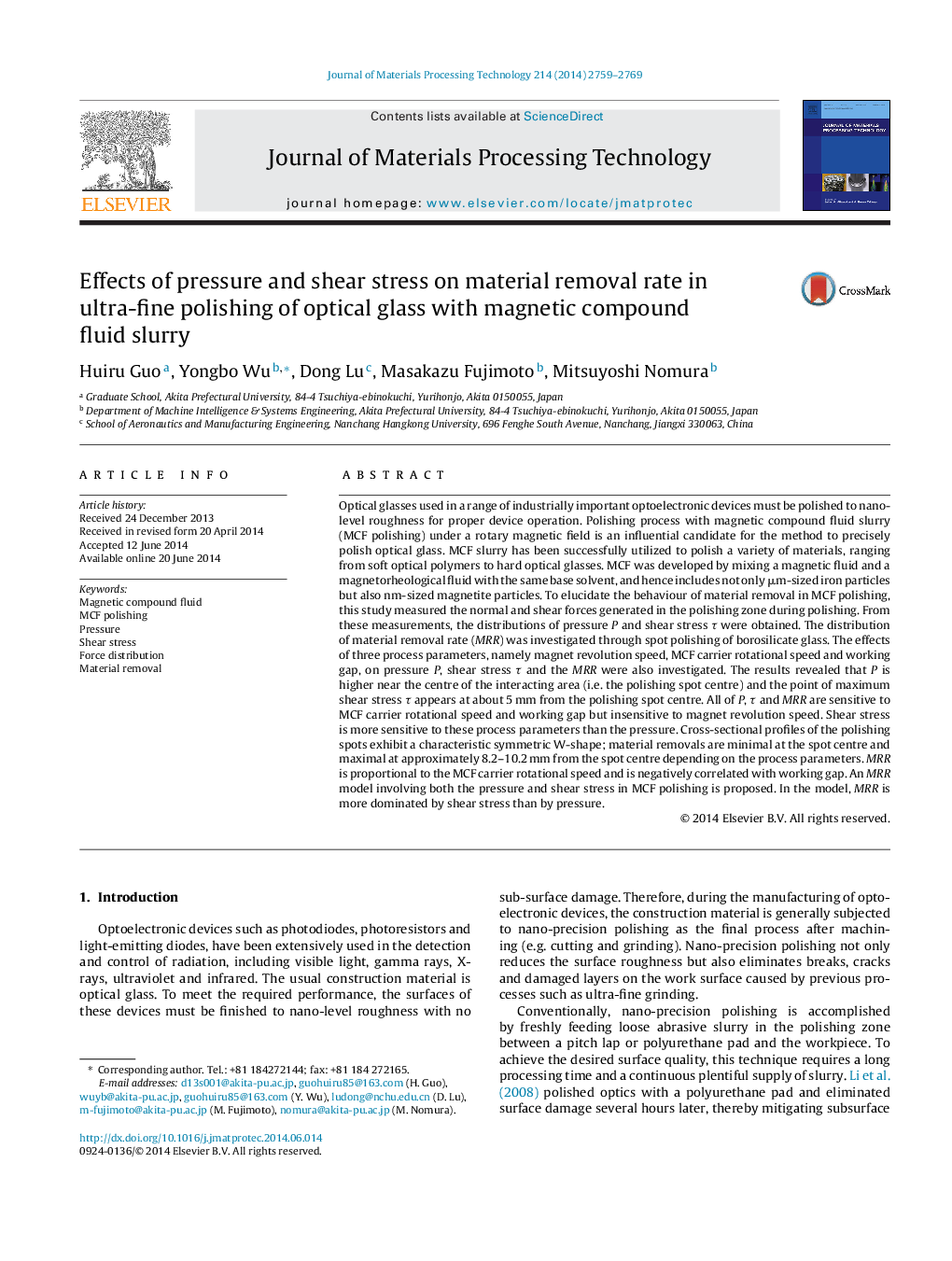| کد مقاله | کد نشریه | سال انتشار | مقاله انگلیسی | نسخه تمام متن |
|---|---|---|---|---|
| 10417411 | 902360 | 2014 | 11 صفحه PDF | دانلود رایگان |
عنوان انگلیسی مقاله ISI
Effects of pressure and shear stress on material removal rate in ultra-fine polishing of optical glass with magnetic compound fluid slurry
ترجمه فارسی عنوان
اثرات تنش برشی و فشار بر میزان حذف مواد در نقاشی فوق العاده خوب از شیشه نوری با دوغابی مایع مرکب مغناطیسی
دانلود مقاله + سفارش ترجمه
دانلود مقاله ISI انگلیسی
رایگان برای ایرانیان
کلمات کلیدی
موضوعات مرتبط
مهندسی و علوم پایه
سایر رشته های مهندسی
مهندسی صنعتی و تولید
چکیده انگلیسی
Optical glasses used in a range of industrially important optoelectronic devices must be polished to nano-level roughness for proper device operation. Polishing process with magnetic compound fluid slurry (MCF polishing) under a rotary magnetic field is an influential candidate for the method to precisely polish optical glass. MCF slurry has been successfully utilized to polish a variety of materials, ranging from soft optical polymers to hard optical glasses. MCF was developed by mixing a magnetic fluid and a magnetorheological fluid with the same base solvent, and hence includes not only μm-sized iron particles but also nm-sized magnetite particles. To elucidate the behaviour of material removal in MCF polishing, this study measured the normal and shear forces generated in the polishing zone during polishing. From these measurements, the distributions of pressure P and shear stress Ï were obtained. The distribution of material removal rate (MRR) was investigated through spot polishing of borosilicate glass. The effects of three process parameters, namely magnet revolution speed, MCF carrier rotational speed and working gap, on pressure P, shear stress Ï and the MRR were also investigated. The results revealed that P is higher near the centre of the interacting area (i.e. the polishing spot centre) and the point of maximum shear stress Ï appears at about 5 mm from the polishing spot centre. All of P, Ï and MRR are sensitive to MCF carrier rotational speed and working gap but insensitive to magnet revolution speed. Shear stress is more sensitive to these process parameters than the pressure. Cross-sectional profiles of the polishing spots exhibit a characteristic symmetric W-shape; material removals are minimal at the spot centre and maximal at approximately 8.2-10.2 mm from the spot centre depending on the process parameters. MRR is proportional to the MCF carrier rotational speed and is negatively correlated with working gap. An MRR model involving both the pressure and shear stress in MCF polishing is proposed. In the model, MRR is more dominated by shear stress than by pressure.
ناشر
Database: Elsevier - ScienceDirect (ساینس دایرکت)
Journal: Journal of Materials Processing Technology - Volume 214, Issue 11, November 2014, Pages 2759-2769
Journal: Journal of Materials Processing Technology - Volume 214, Issue 11, November 2014, Pages 2759-2769
نویسندگان
Huiru Guo, Yongbo Wu, Dong Lu, Masakazu Fujimoto, Mitsuyoshi Nomura,
